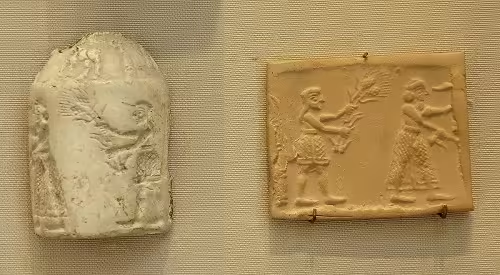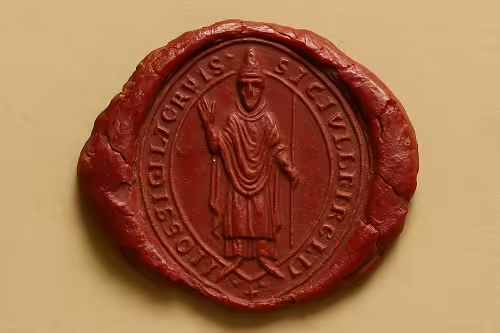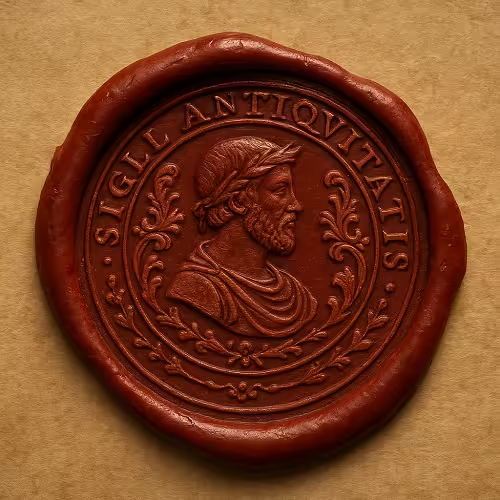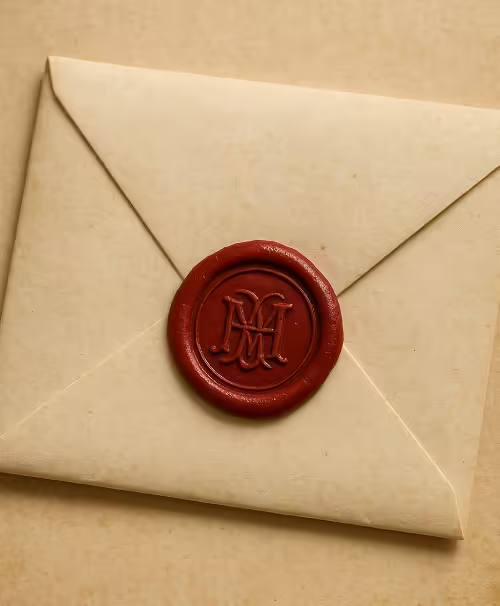
“From Royals to Romance: The History of Wax Seals”
Table of Contents
- Introduction
- The Origins of Wax Seals
- Wax Seals in the Middle Ages
- The Renaissance and the Rise of Personal Seals
- Wax Seals in the Modern Era
- The Role of Seals in Law and Government
- Artistic and Cultural Significance
- Wax Seals in Today’s World
- Conclusion
- FAQ
1. Introduction
Wax seals have captivated people for centuries. Their elegance, symbolism, and practicality make them an enduring element of history, communication, and artistry. Although most people associate wax seals with historical letters or royal decrees, their origins stretch far deeper into the past. Today, they serve both decorative and functional purposes, adding flair and authenticity to invitations, branding, and personal correspondence. But how did these beautiful impressions come to be, and what roles have they played over time?
In this blog post, we’ll journey through the fascinating history of wax seals, tracing their evolution from ancient markers of authority to modern expressions of style and sentiment.
2. The Origins of Wax Seals

The concept of sealing documents can be traced back thousands of years, long before the invention of sealing wax. In ancient Mesopotamia, around 3500 BCE, people used cylinder seals — small cylindrical stones intricately carved with designs, writing, or images. These were rolled across wet clay tablets to leave a continuous impression. The impressions were unique to the owner, much like a modern-day signature or stamp, and served several purposes: they authenticated documents, prevented tampering, and acted as a mark of ownership or authority.
Cylinder seals were often made from durable stones such as lapis lazuli, carnelian, or chalcedony, and were worn on cords or chains so that individuals could carry them at all times. Because literacy was limited in ancient societies, these visual symbols provided a secure and recognizable way to confirm identity and authorize transactions. Archaeologists have found countless examples of cylinder seals, many depicting gods, animals, and mythological scenes, highlighting not only their practical use but also their cultural and artistic value.
Similarly, the Egyptians used clay or mud seals to secure papyrus scrolls, jars, and tombs. Officials and scribes pressed engraved signet rings or carved scarabs into soft material to mark ownership or authority. The Greeks and later the Romans adopted similar traditions, with signet rings becoming especially popular among elites. Roman law even recognized seals as legally binding, equating the mark of a seal with a handwritten signature.
It wasn’t until the early Middle Ages in Europe that sealing wax began to replace clay.
3. Wax Seals in the Middle Ages

By the Middle Ages, wax seals became indispensable tools for monarchs, clergy, and nobles. Clay and mud seals from earlier civilizations had several limitations – they were fragile, prone to damage, and impractical for use on parchment or vellum, which became more common writing materials in medieval Europe. This is where wax began to rise in importance.
By the early Middle Ages (circa 6th–7th century CE), beeswax mixed with resins and pigments was used to create a durable yet soft material for seals. Unlike clay, wax adhered smoothly to parchment and offered a clean, lasting impression that could not be easily altered without evidence of tampering. Because literacy rates were low, seals were used in place of signatures. A seal identified the sender and confirmed the authenticity of the message or document.
Seals also provided security. A broken seal indicated that a letter had been opened or tampered with, much like a modern-day security sticker. In an era of political intrigue and war, this was crucial.
The Catholic Church also relied heavily on wax seals. The Pope used a special seal called a bulla, often made of lead but later of wax, which is where the term “papal bull” originates.
Colors of wax held meaning too. Red was often reserved for royalty, while green might be used for documents of enduring importance. Black wax sometimes signaled mourning or solemnity.
The creation of a seal was a specialized craft. Engravers carved intricate designs into metal matrices, often incorporating family crests, religious symbols, or Latin mottos.
4. The Renaissance and the Rise of Personal Seals

As Europe entered the Renaissance, literacy increased and so did the use of personal seals. Merchants, scholars, and the gentry began using wax seals as a mark of personal identity. This democratization of sealing culture allowed individuals outside of the nobility to leave their mark.
During this period, seals became more elaborate and artistic. People commissioned custom stamps to reflect their personalities or professions. Monograms, allegorical imagery, and coats of arms were popular motifs.
Additionally, the invention of the printing press made it easier to produce documents, but sealing them still provided a layer of authenticity and trust. Letters and manuscripts were often folded in intricate patterns and then sealed shut, ensuring privacy and preventing forgery.
The Renaissance also saw innovations in wax formulae. Beeswax was often colored with natural pigments, allowing for vibrant red, green, blue, and even gold-tinted seals.
5. Wax Seals in the Modern Era

By the 18th and 19th centuries, wax sealing had become a widespread custom. Stationers sold pre-made sealing wax sticks and ornate stampers. In this era, the sealing of personal letters reached its cultural peak.
Seals became a reflection of etiquette and style. A well-sealed letter was a sign of refinement and attention to detail. Wealthy individuals had elaborate seals, often featuring family crests or Latin phrases. Even those of modest means took pride in sealing their letters with care.
During the Victorian period, wax seals played a significant role in the burgeoning postal system. Some people even matched their wax colors to the contents of the letter — red for love, black for condolences, and gold for congratulations.
However, as the 20th century progressed, wax sealing waned. The typewriter, adhesive envelopes, and later, email, rendered the wax seal somewhat obsolete in daily life. Yet, the charm and symbolism endured.
6. The Role of Seals in Law and Government
While personal use of wax seals declined, they remained relevant in legal and governmental contexts. In many legal systems, a seal represented a binding commitment.
In England, a contract was not considered legally valid unless it bore a seal. Even into the modern era, embossed or wax seals have been used to formalize wills, deeds, and charters.
Notaries and registrars continued to use embossed seals, often on official certificates, to certify that documents were genuine. Corporate seals also became commonplace for business contracts.
While wax was often replaced by embossers and digital seals, the concept remained: an official, tamper-proof mark of authority and approval.
7. Artistic and Cultural Significance
Beyond their practical uses, wax seals have always held artistic appeal. From intricately carved stampers to beautifully swirled wax colors, seals represent a fusion of form and function.
In historical contexts, wax seals can provide rich insights into genealogy, heraldry, and symbolism. Many wax impressions are preserved in archives and museums, offering a glimpse into centuries-old customs and communication styles.
Culturally, wax seals often appear in literature and film. They evoke mystery, secrecy, and authenticity. Whether it’s a secret society letter sealed in red or a royal command closed with gold wax, the imagery is powerful and enduring.
8. Wax Seals in Today’s World
Today, wax seals have found a second life in creative and ceremonial contexts. While few people use them for everyday correspondence, they are beloved for weddings, branding, crafting, and personal stationery. Wax Seals Canada makes wax seals everyday for weddings and business branding.
Artisans and small businesses create custom wax seal stamps for clients, often incorporating initials, logos, or seasonal themes. With modern materials and techniques, sealing wax now comes in dozens of colors, finishes, and even glitter-infused varieties.
Many use wax seals to elevate invitations, envelopes, product packaging, or thank-you notes. In the age of digital everything, wax seals offer a tactile, personal touch that feels rare and thoughtful.
Social media platforms like Pinterest and Instagram have also contributed to the resurgence. Tutorials, design inspiration, and DIY kits have helped new generations discover the beauty of sealing.
Even in digital form, the aesthetic persists. Some brands use wax seal motifs in their logos or packaging, while others offer virtual wax stamps in email newsletters or website designs.
9. Conclusion
The history of wax seals is as rich and layered as the materials used to create them. From clay impressions in ancient Mesopotamia to today’s handcrafted embellishments, wax seals have evolved in both form and meaning. What began as a tool for identification and security has grown into a beloved art form that spans cultures and centuries.
Though their practical role has diminished, wax seals continue to enchant, symbolize, and inspire. In a fast-paced digital world, they remind us of the beauty of slowing down, of personal touches, and of the enduring power of tradition.
10. FAQ
Q: When were wax seals first used?
A: Wax seals became common in Europe during the early Middle Ages, though the concept of sealing documents dates back to ancient Mesopotamia and Egypt.
Q: What was sealing wax made of historically?
A: Traditional sealing wax was primarily made from beeswax, sometimes mixed with resin or pigment for added strength and color.
Q: What did the color of the wax signify?
A: Colors could indicate the nature or status of a document. Red and gold were often used for royalty or formal declarations, while black might be used in mourning.
Q: Are wax seals still legally valid today?
A: In some legal systems, seals are still used to formalize documents, especially in ceremonial or notarized contexts, though embossed or digital seals are more common.
Q: Can I make my own wax seal?
A: Absolutely! Many craft stores and online shops offer wax sticks, stampers, and kits for creating custom wax seals at home.
Q: What’s the difference between traditional and modern sealing wax?
A: Traditional wax was brittle and could crack easily, while modern versions are more flexible and designed to withstand mailing without breaking.
